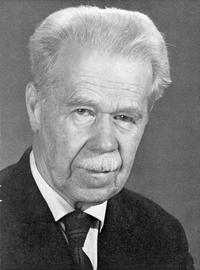
Vaisalantie 20, FI-21500 PIIKKIO, Finland. Tel: +358 2 333 8221

Vaisalantie 20, FI-21500 PIIKKIO, Finland. Tel: +358 2 333 8221
The Väisälä Institute for Space Physics and Astronomy (VISPA) was formed at the University of Turku in 2001, by joining the Space Research Laboratory (SRL) in the Department of Physics and Tuorla Observatory.
Our goal is to combine our theoretical, observational and technical skills to attack key emerging problems in astrophysics and space science. The key research areas for VISPA are cosmology and dark matter, active galactic nuclei, Solar and stellar physics, dynamics of few body systems and the Physics of the near Earth radiation environment.
Both institutions which were brought together to form the VISPA have long experience in space based research. Tuorla Observatory has been involved with data from space missions for more than a decade, such as Hipparcos Space Astrometry Mission, Hubble Space Telescope (HST), ASCA, and X-ray satellite Rosat while the SRL's work on the Solar & Heliospheric Observatory (SOHO) mission has recently been nominated as one of the 30 success stories of the European Space Agency.
VISPA will build on the substantial investment the University of Turku has made in space studies and take advantage of the opportunities of the near future. In fact, space based astronomy has entered a growth phase in Finland, building on use of the opportunities presented when the country joined the European Space Agency in 1995, with major national funders being the Finnish Funding Agency for Technology and Innovation (TEKES) and the Academy of Finland. These two bodies were e.g. funding the ANTARES programme, with specially earmarked funds for space-based research in the period 2001-2003. VISPA took an active part in this programme.

Yrjö Väisälä
(1891-1971)
In 1925 Yrjö Väisälä became Professor of Physics at the newly founded University of Turku, assuming in 1927 responsibilities for Astronomy. In the 1950's he founded Tuorla Observatory. In many ways Väisälä can be thought of as the father of space research in Finland. Väisälä was truly forward thinking in the use of space for scientific research. He proposed in 1946, at a meeting of the Finnish Academy of Science and Letters, the use of rockets or balloons with on-board flashes so that geodetic triangulation could be made even between the continents, and suggested that artificial satellites would be even better. Next year he was already doing experiments with small rockets, and giving interviews explaining how artificial satellites could be used to explore the solar system, and beyond!
Väisälä was a superb optician, and had a tunnel to be built under the hill at Tuorla Observatory, in which interference measurements defining the length standard for geodesy were made and later adopted internationally. The highest quality optics were produced, Väisälä being one of the few in the world who could produce the demanding corrector glasses for Schmidt telescopes. Väisälä actually thought of the Schmidt-type telescope several years before Schmidt, and included the design in his lecture notes on optics, but thought the idea so obvious he didn't publish it further! Väisälä, together with Liisi Oterma, who later became professor at Tuorla, discovered more minor planets in their most effective years than all the other observatories put together.
Väisälä had very modern ideas about the importance of public relations. Visitors and reporters were always welcome at Tuorla, he wrote popular articles about astronomy himself, traveled widely, and spoke many languages. Yrjö Väisälä laid the ground work for space research to thrive in Turku, and it is with great pride that VISPA is named after him.